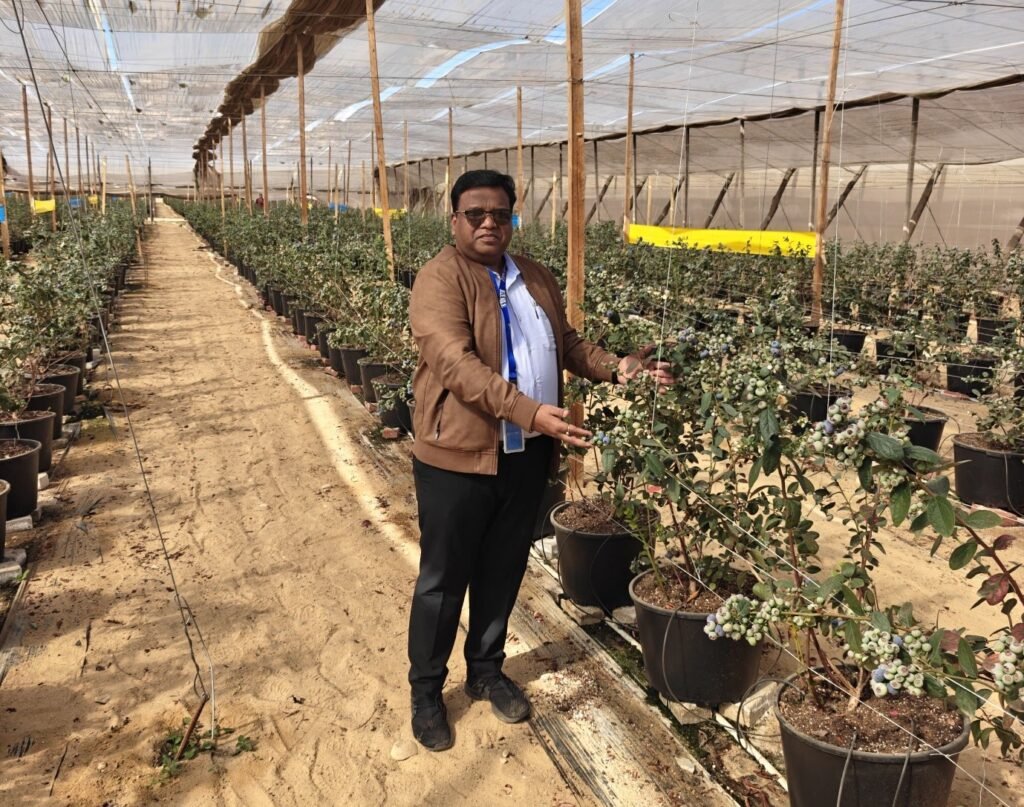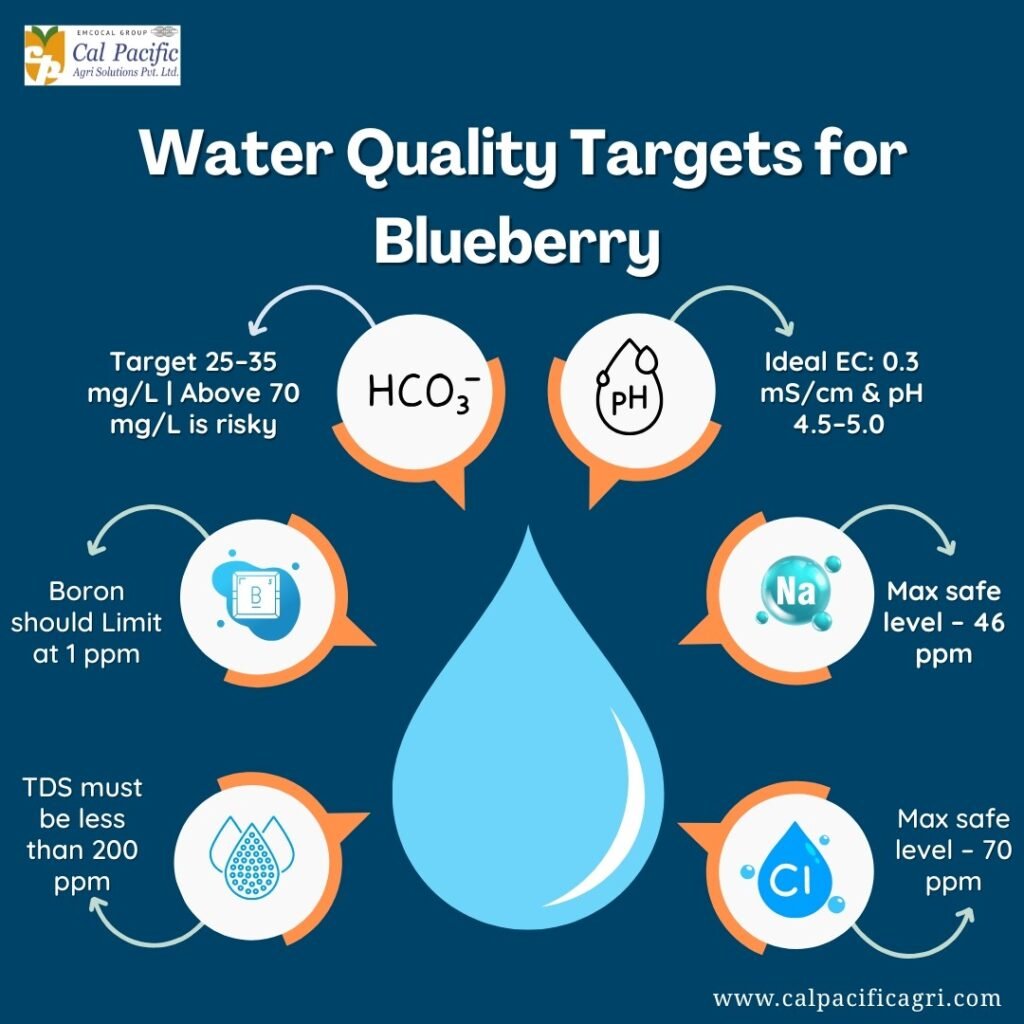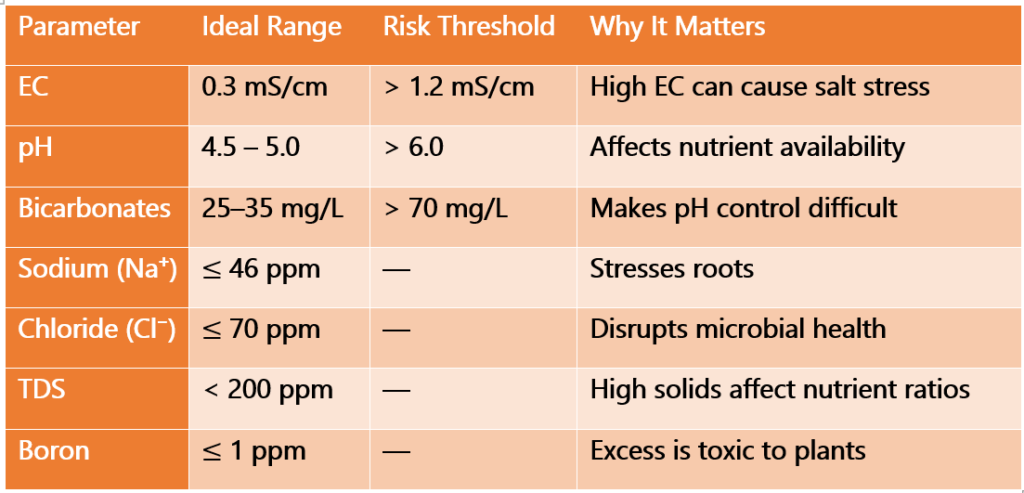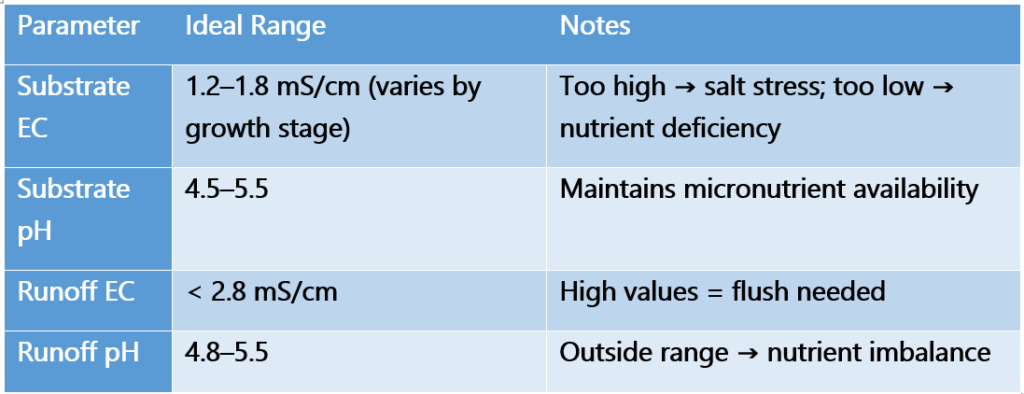
Profitable Soilless Berry Farming Starts with Precision
In high-value berry cultivation—whether growing blueberries in substrate grow bags or strawberries in coco slabs—profitability isn’t just about planting; it’s about precision. Every factor, from the chemistry of your water to the composition of your substrate, must be carefully managed to ensure maximum yield and quality.
At Cal Pacific Agri Solutions Pvt. Ltd., we’ve seen how even small imbalances in water quality, coir preparation, or nutrient delivery can quietly erode yields and profitability.
Drawing on years of scientific expertise and field-tested methods, this guide will show you how to:
- Set the right water quality targets for optimal plant health
- Prepare coir substrates for balanced and productive root zones
- Monitor and manage your root zone environment for long-term productivity
By mastering these hidden keys, you’ll transform your soilless berry operation into a consistently high-yield, premium-quality business.
Water Quality: The Foundation of Profitable Soilless Berry Farming

Water isn’t just a carrier for nutrients — it’s the base ingredient in your fertigation recipe. In soilless berry farming, even small imbalances in water chemistry can cause nutrient lockout, root stress, or yield loss.
Ideal Water Quality Parameters for Substrate-Grown Berries

The Hidden Trouble-Makers
- Hardness & Alkalinity: Excess calcium & magnesium increase pH and cause dripper clogging.
- Chlorine: Damages roots and beneficial microbes. Remove via:
- 24-hour aeration
- Charcoal filtration
- Boiling (15 minutes)
- Potassium metabisulfate treatment
Corrective Solutions
- RO filtration for removing salts and hardness.
- Water softeners to manage calcium & magnesium.
- Acid injection (H₂SO₄ or HNO₃) to neutralize bicarbonates and lower pH.
💡 Pro Tip: Test irrigation water with a certified lab before planting — fixing problems later is far more expensive than prevention.
Substrate Preparation: Creating the Perfect Root Zone for Berries
In soilless berry farming, the growing media is as important as water quality. Coco coir, a popular substrate for blueberries and strawberries, has excellent water-holding capacity and aeration, but in its raw form, it contains excess potassium, sodium, and chloride and is deficient in calcium and magnesium — a recipe for nutrient imbalance and poor root development if left untreated.
Step-by-Step Coir Preparation for Optimal Berry Yields
- Washing
- Flush coir with RO water or acidified water (pH 5.0–5.5) until EC is below 1.2 mS/cm.
- This removes excess salts (Na⁺, Cl⁻) that can cause root stress and reduce nutrient uptake.
- Buffering
- Soak the washed coir in a calcium nitrate solution to replace excess Na⁺ and K⁺ with Ca²⁺.
- Ensures better cation exchange balance and healthier root growth.
- Testing
- EC target: 0.8–1.2 mS/cm
- Moisture content: 50–60%
- Barium chloride test: Confirms complete ion exchange and proper buffering.
⚠️ Important: Never allow coir to dry before flushing — potassium rebound can occur, leading to nutrient lockout and stunted young plants.
💡 Pro Tip: Use pre-buffered coir only if you can verify its EC, pH, and nutrient profile with lab testing to avoid surprises during the growing season.
Monitoring the Root Zone for Consistent Berry Growth
In soilless berry farming, a healthy root zone is like a finely tuned engine — it performs best with constant monitoring and timely adjustments. Your primary feedback comes from runoff — the drainage water after irrigation — which reveals salt buildup, pH drift, and nutrient balance.
Target Ranges for Optimal Berry Yields

Irrigation & Runoff Management by Growth Stage

💡 Measure runoff either at the end of the day or first thing in the morning before irrigation to get the most accurate readings.
🚨 Action Points
- Runoff EC > 2.8 → Salt buildup detected. Flush substrate with clean, pH-adjusted water.
- Runoff pH outside 4.8–5.5 → Adjust fertigation recipe immediately.
- Before Harvest → Avoid aggressive flushing unless EC is high. Over-flushing can drop root zone EC too quickly, causing excess water uptake, softer berries, and reduced shelf life.
Practical Fertigation & Management Tips
- Always use treated, lab-tested water as your base.
- Maintain washed & buffered coir for stable cation balance.
- Track input water EC & pH daily during peak growth.
- Adjust fertigation based on ionic composition, not just total EC.
- Use aeration, filtration, or chemical treatments (e.g., potassium metabisulfite) to manage sodium & chlorine.
- Schedule preventive maintenance on irrigation lines to prevent clogging.
Why Precision Management Pays Off 💰
By combining water chemistry control, proper coir conditioning, and daily root zone monitoring, growers can:
- Increase yield consistency by 15–25%
- Extend berry shelf life by up to 5 days
- Reduce fertilizer waste & leaching losses
- Lower plant stress → better flavor, color, and firmness
📈 This isn’t just about healthier plants — it’s about a higher market value per kilo and improved ROI.

Partner with Cal Pacific Agri Solutions Pvt. Ltd.
In high-value soilless berry farming — whether cultivating blueberries in substrate grow bags or strawberries in coco slabs — success isn’t just about planting; it’s about precision. The most profitable growers know that every element, from water chemistry to substrate preparation, must be perfectly balanced to secure high yields and premium berry quality.
That’s where we come in. At Cal Pacific Agri Solutions Pvt. Ltd., we deliver turnkey berry farming solutions built on scientific principles and proven in the field. Whether you’re scaling an existing operation or starting fresh, we integrate:
- Advanced water testing & treatment to maintain optimal plant health.
- Professional coir washing & buffering for balanced, stress-free root zones.
- Precision fertigation monitoring to ensure consistent yields year-round.
📈 Results You Can Expect:
- 15–25% higher yield consistency
- Shelf life extended by up to 5 days
- Reduced fertilizer waste & improved ROI
💬 Let’s Build Your Success Story
Partner with us and transform your berry project into a high-performance, precision farming operation.
📧 Email: director@calpacificagri.com
Frequently Asked Questions (FAQs)
Q1: What is the ideal pH of irrigation water for blueberries?
A: 4.5–5.0; values above 6.0 risk micronutrient lockout.
Q2: How often should EC and pH be monitored?
A: Ideally, daily during peak growth, for both input water and runoff.
Q3: Why is coir buffering essential?
A: It replaces excess sodium and potassium with calcium, improving nutrient uptake.
Q4: What are the signs of salt accumulation in the substrate?
A: Runoff EC above 2.8 mS/cm signals salt buildup and the need for flushing.
Q5: Should flushing be done before harvest?
A: Only lightly if needed; heavy flushing can soften fruit and shorten shelf life.
#SoillessFarming #BerryFarming #Hydroponics #BerryCultivation #BlueberryFarming #StrawberryFarming #CoirSubstrate #WaterQuality
#NutrientManagement #Fertigation #PrecisionFarming #AgriTech #SustainableFarming #HighYieldFarming #BerryFarmTips #FarmToMarket #TurnkeyFarming #AgricultureInnovation #FarmManagement
#CropOptimization #calpacificagrisolutions #BlueberryfarminginIndia #BlueberriesinIndia #Berryboom
